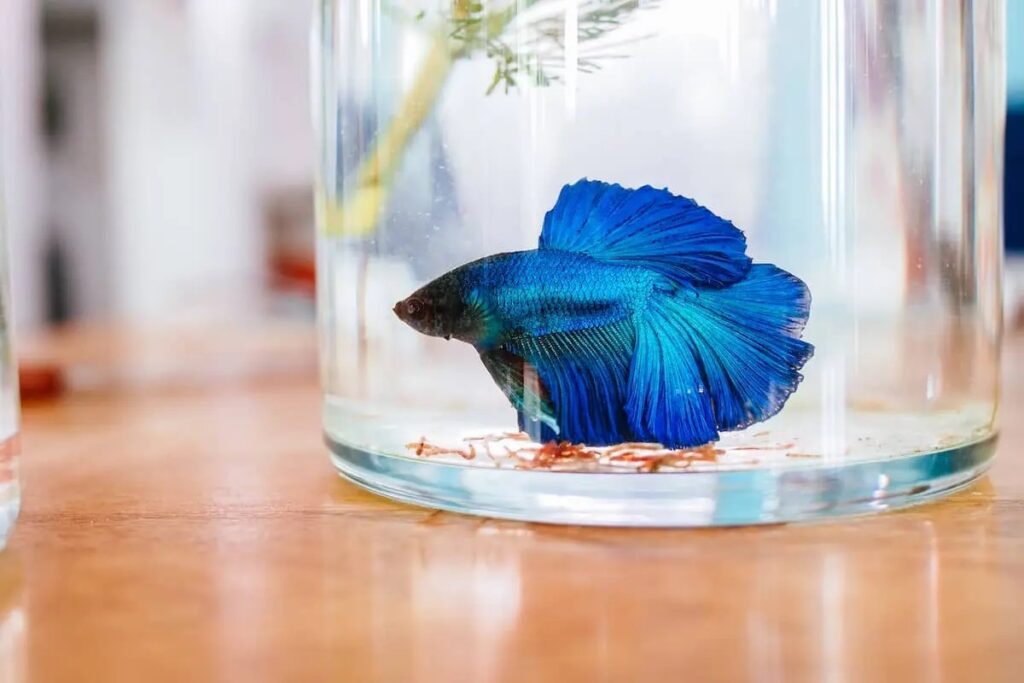When setting up an aquarium for your betta fish, one of the most important factors to consider is the water flow. Betta fish, also known as Siamese fighting fish, are native to calm, slow-moving waters in Southeast Asia, and they thrive in environments with gentle water flow. This makes choosing the right pump for your tank a critical decision. A pump that’s too strong can create a current that is overwhelming for your betta, leading to stress, health problems, or even injury. But how can you tell if your pump is too strong for your betta fish? Let’s explore the signs, effects, and solutions to ensure your betta thrives in the perfect environment.
1. Signs Your Pump Might Be Too Strong for Your Betta Fish
Betta fish are known for their long, flowing fins and beautiful colors, but they are not well-suited to fast-moving water. Here are a few signs that your aquarium pump may be too powerful for your betta:
1 Betta is Struggling to Swim
If your betta is having trouble swimming or seems to be constantly fighting against the current, it’s a clear indication that the water flow is too strong. Betta fish are not strong swimmers and prefer calm water. If they are consistently pushed around by the current, it can lead to exhaustion and stress.
2 Betta Hides or Stays in One Spot
Another sign is if your betta spends an excessive amount of time hiding in a corner or near decorations where the flow of water is weaker. Betta fish are naturally curious and active, but a strong current may make them feel unsafe or uncomfortable, prompting them to seek shelter to avoid the flow.
3 Difficulty Reaching the Surface for Air
Betta fish breathe air from the surface, and they need easy access to the water’s surface to gulp oxygen. If your pump creates strong water turbulence, it may make it difficult for your betta to swim to the surface. This can cause stress and, over time, respiratory problems.
4 Tattered Fins or Skin Damage
Constant exposure to a strong current can result in fin damage, especially for bettas with delicate fins. If your betta’s fins appear torn or shredded, it could be due to the stress caused by the water flow. Strong currents can also cause abrasion to the fish’s skin.
2. Why Strong Water Flow is Problematic for Betta Fish
Betta fish are accustomed to living in calm, shallow waters, such as rice paddies, slow-moving streams, and ponds. The natural environment for a betta is one where the water is either still or gently flowing. A strong water current can cause several issues:
- Stress: Betta fish are sensitive to their environment, and high water flow can increase their stress levels, leading to reduced appetite, erratic behavior, and weakened immune function.
- Fatigue: Betta fish have to exert a lot of energy to swim against a current, leading to fatigue, which can compromise their health over time.
- Health Issues: Prolonged exposure to a strong current can result in physical injuries, including torn fins, skin abrasions, and even scale loss.
3. How to Determine the Ideal Water Flow for Your Betta

The ideal water flow for a betta fish tank should be minimal, and the water should circulate gently without creating strong currents. Here are some tips to help you determine the appropriate water flow for your betta’s tank:
1 Choose the Right Pump
When selecting a pump, it’s important to pick one that is suitable for the size of your aquarium. Pumps are typically rated by their flow rate (gallons per hour or GPH). For bettas, the flow rate should be about 2-4 times the volume of your tank per hour. For example, if you have a 10-gallon tank, choose a pump with a flow rate of 20-40 GPH.
2 Use a Sponge Filter or Adjustable Pump
Sponge filters are a great option for betta fish because they provide gentle filtration without creating a strong current. They also double as aerators, keeping the water oxygenated. If you prefer a power filter, consider an adjustable pump, which allows you to control the water flow to your betta’s liking.
3 Redirect the Flow
If you already have a strong pump, you can reduce the impact on your betta by redirecting the flow. Adjust the filter output to direct the water towards a corner or the back of the tank, away from where your betta spends most of its time. This will create areas of calm water that your betta can enjoy.
4 Add Plants or Decorations
Live plants, driftwood, or aquarium decorations can help break the water flow and create sheltered areas with less current. Plants such as Java fern, Anubias, or Amazon sword are great for providing cover and creating calm spots for your betta to relax.
4. How to Adjust Your Tank’s Current to Suit Your Betta
If you notice that your pump is creating a current that’s too strong, don’t worry—there are several ways to adjust the flow without having to replace the entire pump.
1 Install a Flow Spreader
A flow spreader is an accessory that can be attached to the outlet of your filter to disperse the water more evenly across the tank. This can help reduce the intensity of the flow in any particular area, making the environment much more comfortable for your betta.
2 Use a Filter Baffle
A filter baffle is a simple DIY solution that involves attaching a sponge or foam around the filter’s output to soften the water flow. This not only reduces the current but also helps in maintaining good water circulation without harming your betta.
3 Reposition the Filter
Sometimes simply repositioning the filter can make a huge difference. Moving it to a less central location or adjusting its angle can help reduce the strength of the current and provide your betta with a calmer environment.
Conclusion: Ensuring a Happy Betta Fish
Your betta fish’s well-being largely depends on the environment you create for it. A pump that’s too strong can cause stress, injury, and health problems for your betta. By paying attention to signs of discomfort, such as struggling to swim, hiding, or tattered fins, and making the necessary adjustments, you can create an ideal habitat for your betta.
To ensure your betta stays healthy and happy, always aim for a low, gentle water flow, and choose equipment designed to cater to their specific needs. With the right adjustments, your betta will thrive in its peaceful, tranquil tank, displaying all its vibrant colors and graceful movements.
By setting up a proper water flow environment, you’ll be providing your betta fish with the best chance at a long, healthy, and happy life.



